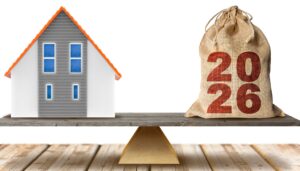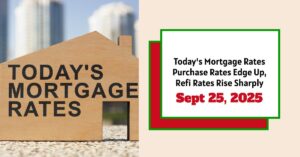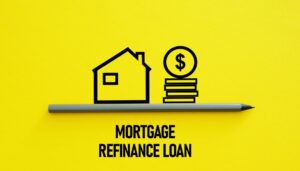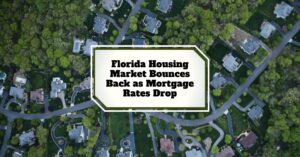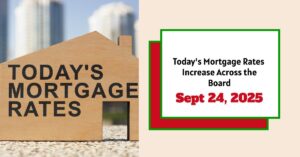Thinking about buying a home or maybe refinancing your current one? You're likely wondering what will happen with mortgage rates over the next year. Well, I've got some good news, with a healthy dose of reality. As of mid-September 2025, mortgage rates are hovering around 6.2-6.3% for a 30-year fixed mortgage, a welcome drop from earlier in the year. Looking ahead to September 2026, most experts believe we'll see rates average between 6.1% and 6.5%. While that’s the general direction, it’s not a straight line down, and a lot can still happen.
Mortgage Rates Predictions for the Next 12 Months: Sept 2025 to Sept 2026
I’ve been following the housing market and mortgage trends for a long time, and honestly, it feels like we’ve been on a rollercoaster. Just a few years ago, you could barely find a mortgage under 3%. Now, we're talking about rates in the low 6s. It’s a massive shift, and it’s completely reshaped how people approach buying and selling homes.
The big question on everyone’s mind is: are rates going to keep falling? And if so, how much?
How Did We Get Here? A Look Back at Rate Swings
To understand where we’re going, it helps to know where we’ve been. The last five years have been wild. Remember 2020 and 2021? Mortgage rates were unbelievably low, averaging around 3.38% in 2020 and even dipping to 3.15% in 2021. The Federal Reserve, trying to boost the economy during the early days of the pandemic, slashed interest rates to near zero. This made borrowing money incredibly cheap, and it fueled a huge boom in home buying. Everyone wanted a piece of that low-interest-rate pie.
But then, inflation started to bite. As the economy warmed up and prices for everything from groceries to gas started climbing, the Federal Reserve had to act. Starting in 2022, they began raising their key interest rate aggressively to try and cool things down. This directly pushed mortgage rates up, making them climb to an average of 5.53% that year. By 2023, the average hit a staggering 7.00%, and for a while, we even saw rates go over 8% – something we hadn't seen since the year 2000! This made owning a home feel out of reach for many people.
Fast forward to 2024, and things started to calm down a bit. Rates averaged around 6.90% for the year. Then, in September 2025, the Federal Reserve made another move. They cut their benchmark rate by 0.25%, partly because the job market started showing signs of slowing down. This fed into the recent drop, bringing those 30-year fixed rates down to roughly 6.26% by mid-September 2025. It’s a significant change, and it’s definitely making people reconsider their housing plans.
Here's a simplified look at how those averages have changed:
| Year | Average 30-Year Fixed Rate |
|---|---|
| 2020 | 3.38% |
| 2021 | 3.15% |
| 2022 | 5.53% |
| 2023 | 7.00% |
| 2024 | 6.90% |
| 2025 (YTD) | 6.81% (average) |
What's Driving Mortgage Rates Now?
So, what’s really influencing these numbers? It’s not just one thing, but a combination of big economic forces:
- What the Fed is Doing: The Federal Reserve's key interest rate is like the steering wheel for mortgage rates. When they raise it, mortgage rates tend to go up; when they lower it, rates usually follow. Most signs point to them potentially making a couple more quarter-point cuts in 2025 if the economy continues to behave.
- Inflation: This is the big one the Fed has been fighting. If inflation stays under control, around the predicted 3.3% mark, rates might stay in that comfortable mid-6% range. But if prices start rising faster than expected, the Fed might hold off on cutting rates, or even raise them again, which would push mortgage rates back up.
- The 10-Year Treasury Yield: This is a benchmark for many loans, including mortgages. It’s closely watched. Currently, it's hovering around 4.1-4.5%. The difference between this yield and the mortgage rate, called the spread, is important. If that spread widens, mortgage rates can go up even if Treasury yields stay the same.
- Jobs and the Economy: How many new jobs are created each month? Is the economy growing, or is it slowing down? We saw new job additions of about 54,000 in August 2025, which isn't super strong. Weaker job numbers can encourage the Fed to cut rates faster, potentially lowering mortgage rates. Stronger economic data, on the other hand, might make them pause.
- Global Stuff: International events, trade wars, or political instability can surprisingly affect mortgage rates. If these things cause uncertainty or push up prices for goods internationally, it could indirectly raise inflation and keep rates higher.
- You! (Sort of): While these big economic factors set the general trend, your own financial situation matters for your individual rate. Your credit score, how much you're putting down as a down payment, and the type of loan you choose all play a role.
There's definitely a debate happening among economists. Some think inflation might stick around longer than expected, keeping rates stubbornly high. Others are more worried about a potential recession, which could lead to sharper rate cuts and lower mortgage rates. It’s a tricky balance.
Expert Predictions: What's the Crystal Ball Saying?
I’ve looked at what some of the big housing and economic groups are saying. It’s not a perfect science, but it gives us a good idea of the consensus.
Here’s a rough idea from some major organizations:
| Organization | By End of 2025 | Average 2026 | By End of 2026 |
|---|---|---|---|
| Fannie Mae | 6.5% | 6.1-6.4% | 6.1% |
| Mortgage Bankers Association (MBA) | 6.7% | 6.4-6.5% | 6.4% |
| National Association of Realtors (NAR) | 6.7% | 6.0% | N/A |
| National Association of Home Builders (NAHB) | 6.6% | 6.32% | N/A |
| Deloitte/Goldman Sachs (based on Treasury Yields) | ~6.2-6.4% | ~6.0-6.2% | N/A |
What does this table tell me? Most experts seem to agree that we'll likely see rates settle in the mid-6% range for most of 2026. There’s an expectation of gradual easing, meaning rates might slowly tick down if things go according to plan. Some even see a possibility of rates dipping into the high 5s if the economy weakens more significantly and the Fed cuts rates more aggressively.
On social media platforms like X (formerly Twitter), you’ll find financial experts discussing these predictions, and the sentiment seems pretty similar – cautious optimism for lower rates, but with many caveats.
How These Rates Affect You: Buyers and Homeowners
So, what does this mean if you're in the market for a new home or thinking about refinancing?
- For Buyers: If rates continue on this predicted path downward, it could make buying a home more affordable. Imagine a 0.5% drop on a $400,000 mortgage – that could save you around $150 per month. Some estimates suggest this could push home sales up by 3-14% in 2026 compared to this year. Home prices are still expected to rise, but maybe at a slower pace, perhaps 1-4% annually. This could be the window to get into the market, especially if you’re a first-time buyer.
- For Refinancers: If you currently have a mortgage with a rate above 7%, and dips continue, you might find yourself in a good position to refinance. Some reports suggest that if rates hit around 6.125%, millions of homeowners could become eligible to save money by refinancing.
However, there’s a catch. We’re still facing a shortage of homes for sale in many areas. This lack of inventory can keep prices from falling, or even cause them to go up, even if rates decrease. So, while rates might get better, the overall cost of buying might still be high.
Related Topics:
Mortgage Rates Predictions Next 90 Days: August to October 2025
Potential Risks and What Could Go Wrong
It’s easy to get caught up in the idea of falling rates, but we have to consider what could derail these predictions:
- The Optimistic Scenario: Imagine if the job market really cools off, and the Fed feels pressure to cut rates faster and deeper than expected. This could push mortgage rates down to, say, 5.875%. That would likely boost demand for homes significantly.
- The Pessimistic Scenario: On the flip side, what if inflation suddenly flares up again? Maybe due to something like new supply chain issues or unexpected consumer spending surges. If inflation starts climbing again, the Fed might have to stop cutting rates or even raise them. This would likely send mortgage rates back up towards the 7% mark, potentially freezing the housing market again.
- Long-Term Stability: Looking further out, many economists believe a sustainable mortgage rate in the long run might be around 6%. So, even if we see rates dip lower, they might not stay there for years and years.
My Take: What Should You Do?
As someone who spends a lot of time digging into this stuff, my advice is always to prepare rather than try to perfectly time the market.
- If You're Buying Soon: Don’t wait endlessly for the “perfect” rate. If you find a home you love and the rate is what you can afford, consider locking it in. Shopping around with different lenders is crucial – you can often find rate differences of 0.25% or more just by comparing. Also, consider adjustable-rate mortgages (ARMs) if you plan to move or refinance within the first 5-10 years, as their initial rates are often lower.
- If You're Thinking of Refinancing: Keep a close eye on rates. If your current mortgage rate is significantly higher than the national average, especially above 7%, it might be worth looking into refinancing. Use online calculators and check resources like Freddie Mac's Primary Mortgage Market Survey (PMMS) to track trends.
- General Advice: The best thing you can do is to manage your own finances. Keep your credit score in good shape – higher scores get better rates. Build up your savings for a down payment; a larger down payment can reduce your loan amount and potentially give you better rate options. And if you’re unsure, talk to a trusted mortgage broker or financial advisor. They can help you understand your options based on your specific situation.
The mortgage rate market is always moving, influenced by countless factors. While current predictions point to a gradual descent into the mid-6% range over the next year, it's important to stay informed, be realistic, and focus on what you can control in your own financial journey.
Capitalize Amid Rising Mortgage Rates
With mortgage rates expected to remain high, it’s more important than ever to focus on strategic real estate investments that offer stability and passive income.
Norada delivers turnkey rental properties in resilient markets—helping you build steady cash flow and protect your wealth from borrowing cost volatility.
HOT NEW LISTINGS JUST ADDED!
Speak with a seasoned Norada investment counselor today (No Obligation):
(800) 611‑3060
Also Read:
- Will Mortgage Rates Go Down in 2025: Morgan Stanley's Forecast
- Mortgage Rate Predictions 2025 from 4 Leading Housing Experts
- Mortgage Rate Predictions for the Next 3 Years: 2026, 2027, 2028
- 30-Year Fixed Mortgage Rate Forecast for the Next 5 Years
- 15-Year Fixed Mortgage Rate Predictions for Next 5 Years: 2025-2029
- Will Mortgage Rates Ever Be 3% Again in the Future?
- Mortgage Rates Predictions for Next 2 Years
- Mortgage Rate Predictions for Next 5 Years
- Mortgage Rate Predictions: Why 2% and 3% Rates are Out of Reach
- How Lower Mortgage Rates Can Save You Thousands?
- How to Get a Low Mortgage Interest Rate?
- Will Mortgage Rates Ever Be 4% Again?
